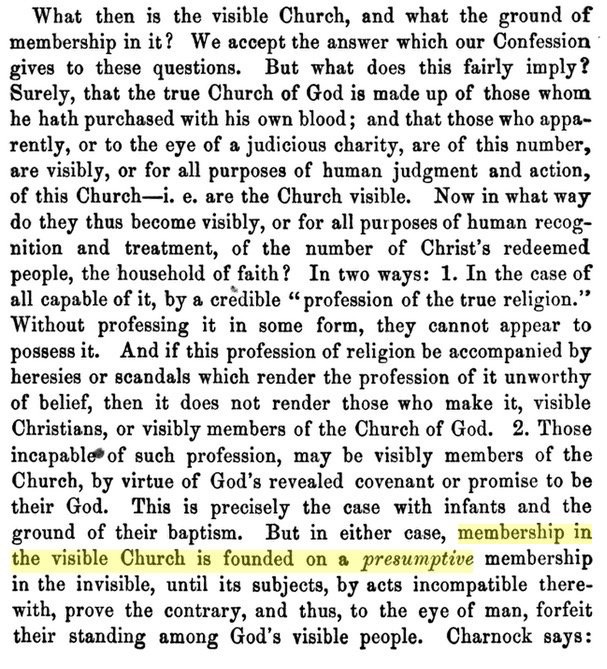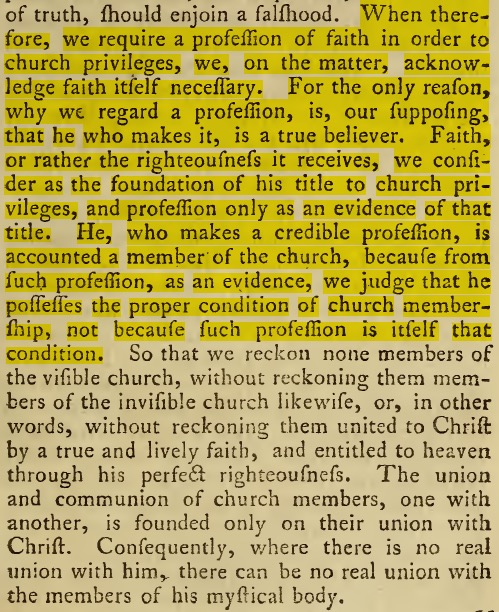10
Jul
2015
In
By Brandon Adams
Does the 2nd London Baptist Confession only permit 1689 Federalism?
On 10, Jul 2015 | In | By Brandon Adams
No. 1689 Federalism is a view of covenant theology (distinguished by its belief that the old and new covenants are different, distinct covenants and that only the new covenant is the covenant of grace) that was held by every published particular baptist work in the 17th century. It accounts for the change in language found in the 2nd London Baptist Confession with regards to covenant theology (in comparison to the WCF). However, this new language was written broadly enough to allow a variety of views to equally confess it. The label “1689 Federalism” is not intended to suggest that no other view is permissible amongst confessional baptists.
In his book From Shadow to Substance, Samuel Renihan elaborates.
[Link to this answer]Throughout this time [1640s and 1650s], a core model of Particular Baptist covenant theology developed. The covenant of grace was a covenant of sure salvation for all of God’s elect. The covenant of circumcision was a covenant of works for Abraham’s physical descendants intended to set them apart as the people from whom the promised seed of the woman would be born. The old covenant made salvation known through typology, though the types are distinct from the antitype. When Christ was born, the national covenant of works was aborgated and the new covenant remained alone, the antitype eclipsing the type. From Ritor to Cheare and Steed, the Particular Baptists presented a united but diversely presented covenant theology… For the rest of the seventeenth century it was expanded by the Particular Baptists with considerable continuity and minimal diversity.
The key difference between these confessions [WCF and 2LBC] is the Particular Baptists’ complete avoidance of distinguishing the covenant of grace into two historical administrations. In their “quill-skirmishes,” the Particular Baptists had repeatedly rejected the idea that the old covenant was the covenant of grace in a different form. Their typology distinguished the covenant of grace from the earthly national covenants made with Abraham and Moses. The hermeneutics they employed were not those of the continental Anabaptists, but of the Reformed tradition as exemplified by theologians from Ursinus to Cameron. The old covenant was distinct from the covenant of grace, but subservient to the covenant of grace.
In their Confession, the Particular Baptists directly tied the covenant of grace to the gospel. Where the gospel is found, there is the covenant of grace. As the gospel was progressively made known throughout history, the covenant of grace was progressively made known throughout history. The covenant of grace should not be flattened into two administrations, oversimplifying its progressive revelation and complex relationship to the old covenant. Rather, the covenant of grace should be seen through “farther steps.” Through the gospel, it permeated the entire Old Testament form the promise of the seed of the woman to “the full discovery thereof” in the New Testament. And all the elect were saved by this covenant.
The language is carefully broad and specific at the same time. Any of the Particular Baptists’ opponents could have subscribed to these statements. Many paedobaptist treatises dedicated great detail to the progressive historical development of the covenant of grace, often subdividing the two administrations of the covenant of grace into narrower periods. The difference between the confessions, then, has less to do with what the Particular Baptists said, and more to do with what they did not say. The model they confessed was not so exclusively or distinctively Baptist that others would disagree with it. But they clearly refused to commit themselves to the more common, and at times unclear, vernacular of substance and administration…
Though the Particular Baptists’ choice of words clearly reflects their model of the covenant of grace, it is possible that this chapter of the Confession was written broadly, not just to avoid unnecessarily distancing themselves from Presbyterian and Congregational allies, but also to fit varying thought on this subject within the Baptists themselves. This is something they were willing to do. For example, they “purposely omitted the mention of things” relating to open and closed membership.
The historical context of the confession lies in the London Baptist’ cooperation with the Broadmead Bristol Baptist church, an open-membership church. One of the pastors of the Bristol church, Thomas Hardcastle, whom Kiffen and Coxe had been asked to ordain but could not due to their dealing with Collier, taught a model that differed from most of the Particular Baptists. He contended that the old covenant was the covenant of grace…. but his views were taught privately and not published… Even Cheare, Steed, Hutchinson, and Delaune, despite their confusing language, rejected this idea. The language of 2LCF 7.3 is broad enough that while it confesses a covenantal model that intentionally departs from standard paedobaptist federalism, it seems to do so in a way that allows for some diversity of thought and expression.
(147, 326, 187-191, 327)




